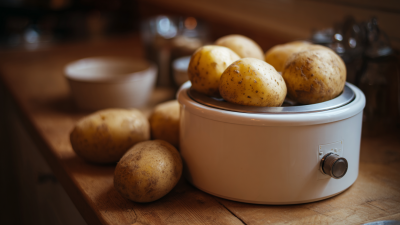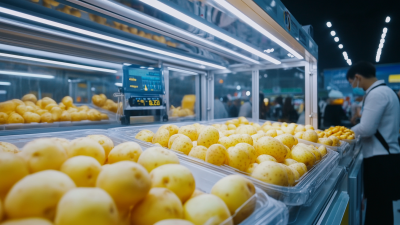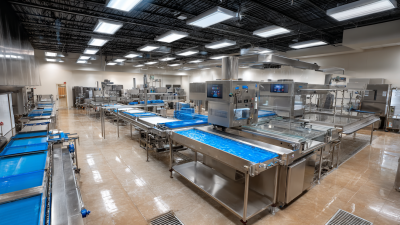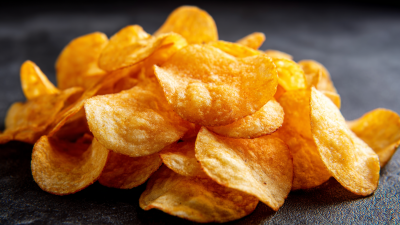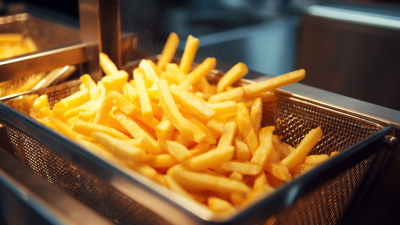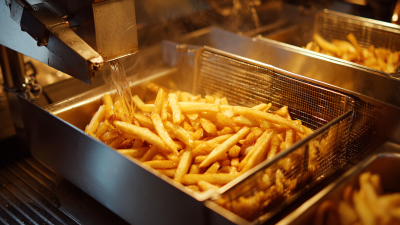
The food processing industry is on the cusp of a significant transformation, driven by the adoption of advanced technologies aimed at enhancing efficiency and product quality. Among these innovations, the Potato Blanching Machine stands out as a critical component in the pre-processing phase, where it plays a pivotal role in preserving color, texture, and nutritional value of potatoes.

According to a report by Allied Market Research, the global blanched potato market is projected to reach $45 billion by 2025, reflecting a compound annual growth rate (CAGR) of 5.1%. This growth is fueled by rising consumer demand for convenience foods and healthier snack options.
Innovative blanching solutions not only streamline production processes but also contribute to energy savings and waste reduction, making them essential for modern food manufacturers aiming to stay competitive in a rapidly evolving market. As we explore the latest advancements in Potato Blanching Machine technologies, it's clear that they are set to revolutionize the way we process food for years to come.
The food processing industry has witnessed significant advancements with the introduction of innovative potato blanching machines. These machines utilize state-of-the-art technology to enhance efficiency and maintain the quality of potatoes. By precisely controlling temperature and blanching time, they ensure that potatoes retain their flavor, color, and nutrients, leading to better end products. This transformation not only streamlines the food preparation process but also meets the increasing consumer demand for better-quality food.
Tip 1: When considering a blanching machine, look for models with adjustable settings. This flexibility allows you to customize the blanching process based on potato variety and desired outcome, ensuring optimal results every time.
Moreover, the integration of automation in these machines reduces human error and labor costs, creating a more sustainable operation. With features like automatic loading and unloading, operators can focus on quality control rather than manual handling, which can often lead to inconsistencies. The use of innovative materials also contributes to energy efficiency, further enhancing the overall impact on production costs.
Tip 2: Regularly maintain your blanching machine to ensure it operates at peak efficiency. Cleaning and checking components can prevent downtime and extend the machine's lifespan, saving you money in the long run.
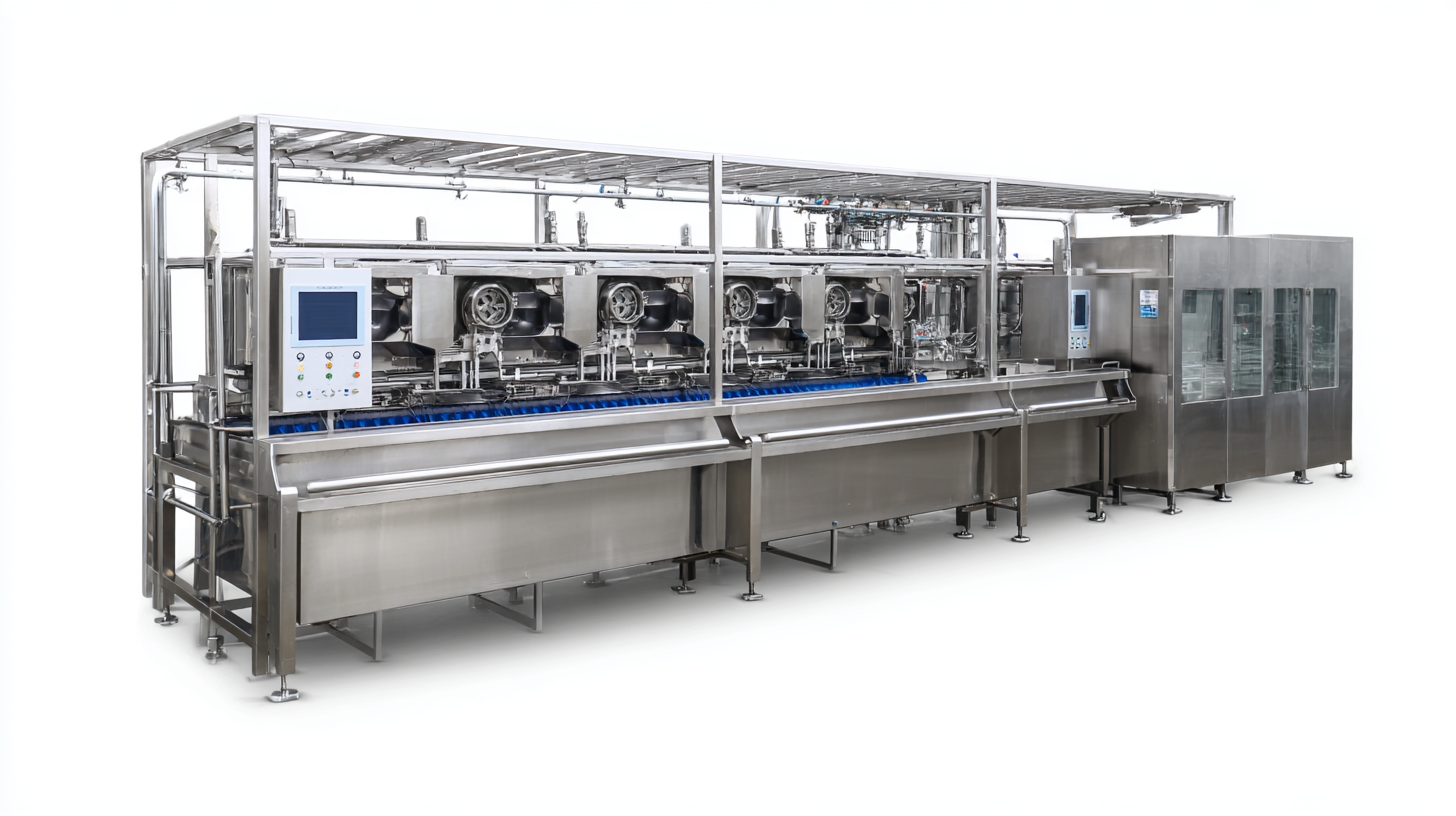
The advancements in potato blanching technology significantly enhance efficiency in the food processing sector. Modern blanching machines incorporate cutting-edge features such as precise temperature control and automated timing systems, ensuring potatoes are uniformly blanched. This precision not only retains the vegetables' natural flavor and texture but also reduces nutrient loss, a critical factor in maintaining the quality of processed food products. With the ability to process large quantities quickly, these machines help manufacturers meet high demand without sacrificing quality.
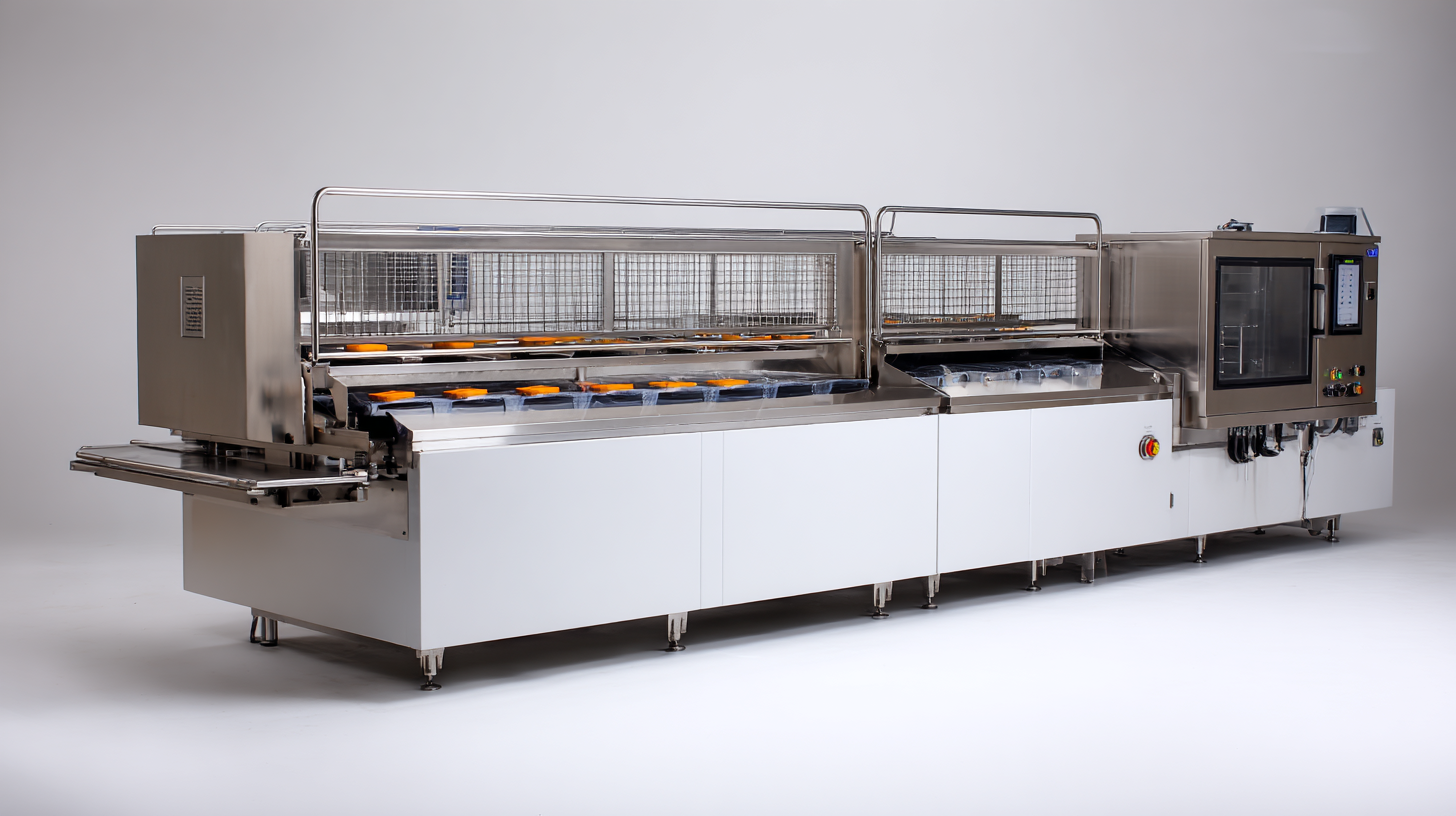
Moreover, the integration of smart technology in blanching machines further amplifies efficiency gains. By utilizing sensors and data analytics, these systems can monitor and adjust processes in real time, minimizing energy consumption and reducing waste. This not only lowers operational costs but also aligns with sustainability goals in the food industry. As more food processors adopt these innovative solutions, the overall productivity of potato blanching will continue to rise, demonstrating the transformative impact of advanced technology in food processing.
In recent years, the food processing industry has been increasingly focused on sustainability, particularly in terms of energy and resource efficiency. Innovative potato blanching machines are at the forefront of this revolution, offering eco-friendly solutions that not only enhance productivity but also reduce environmental impact. According to a report by the Food Processing Suppliers Association, integrating advanced blanching technologies can decrease water consumption by up to 40% while improving energy efficiency by approximately 30%. This shift towards sustainable practices is vital, as the global food processing industry is projected to reach a market value of $5 trillion by 2028, making responsible production methods essential for long-term growth.
Implementing sustainable blanching solutions can also ensure compliance with evolving regulatory standards that emphasize environmental responsibility. Many modern machines utilize steam or microwave blanching methods, which are known to be more energy-efficient than traditional hot water blanching. By adopting these technologies, companies can significantly decrease their carbon footprint and position themselves as leaders in the sustainable food processing initiative.
Tip: Consider investing in equipment with adjustable settings to optimize blanching time and energy usage, helping to further reduce environmental impact without sacrificing product quality. Additionally, regular maintenance of machines can enhance their performance and longevity, leading to more sustainable operations.
The comparative analysis of traditional versus modern potato blanching technologies reveals significant advancements in enhancing food safety and quality. Traditional blanching methods often rely on lengthy thermal processes that not only consume more energy but may also lead to undesirable changes in flavor and texture. Modern methods, particularly innovative blanching machines, utilize precise temperature control and shorter processing times, which are crucial in reducing the formation of acrylamide—a harmful compound found in heated starchy foods. Research indicates that optimized blanching can significantly lower acrylamide levels, with some studies showing reductions by as much as 70% when using novel techniques.
Moreover, the introduction of nonthermal technologies, such as microwave and high-pressure blanching, represents a leap forward in food processing. These technologies maintain the nutritional profile of potatoes while effectively mitigating acrylamide formation. Reports suggest that such methods not only enhance product safety but also improve overall yield and quality. By integrating these modern blanching solutions, food processors can align with the industry's stringent safety standards and consumer demand for healthier, high-quality products. The shift towards these cutting-edge technologies marks a pivotal point in revolutionizing food processing, ensuring that the industry addresses both safety concerns and the need for efficiency.
Recent technological advancements in food processing are transforming the way potato blanching machines operate. Future trends indicate a shift towards more energy-efficient and environmentally-friendly designs. Manufacturers are now focusing on incorporating smart technology that not only automates the blanching process but also monitors energy usage in real-time. This innovation ensures that waste is minimized, leading to both cost savings and reduced environmental impact.
Tips: When considering the upgrade of your potato blanching equipment, look for machines that utilize IoT (Internet of Things) capabilities. These machines can provide valuable data insights and improve overall operational efficiency. Additionally, explore machines that allow for adjustable settings to accommodate various potato varieties, ensuring optimal blanching results.
Moreover, as consumers become more health-conscious, the demand for less processed food is growing. This trend encourages the development of blanching machines that preserve the nutritional quality of potatoes while effectively reducing microbial load. In the coming years, we can expect even more innovations that align with health trends and consumer preferences, making the potato blanching process quicker and more efficient.
Tips: Keep an eye on machine reviews and case studies to understand how recent technological advancements can enhance your production line. Investing in modern blanching solutions now positions your business to meet future market demands effectively.
